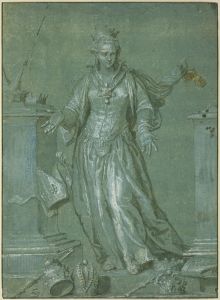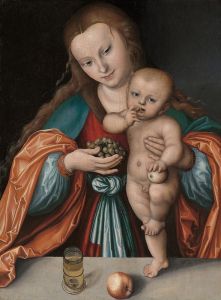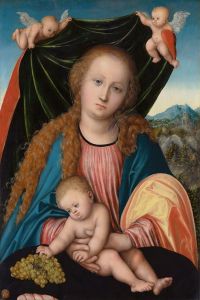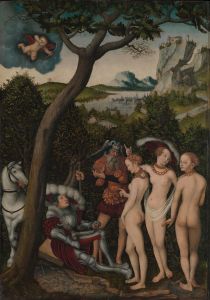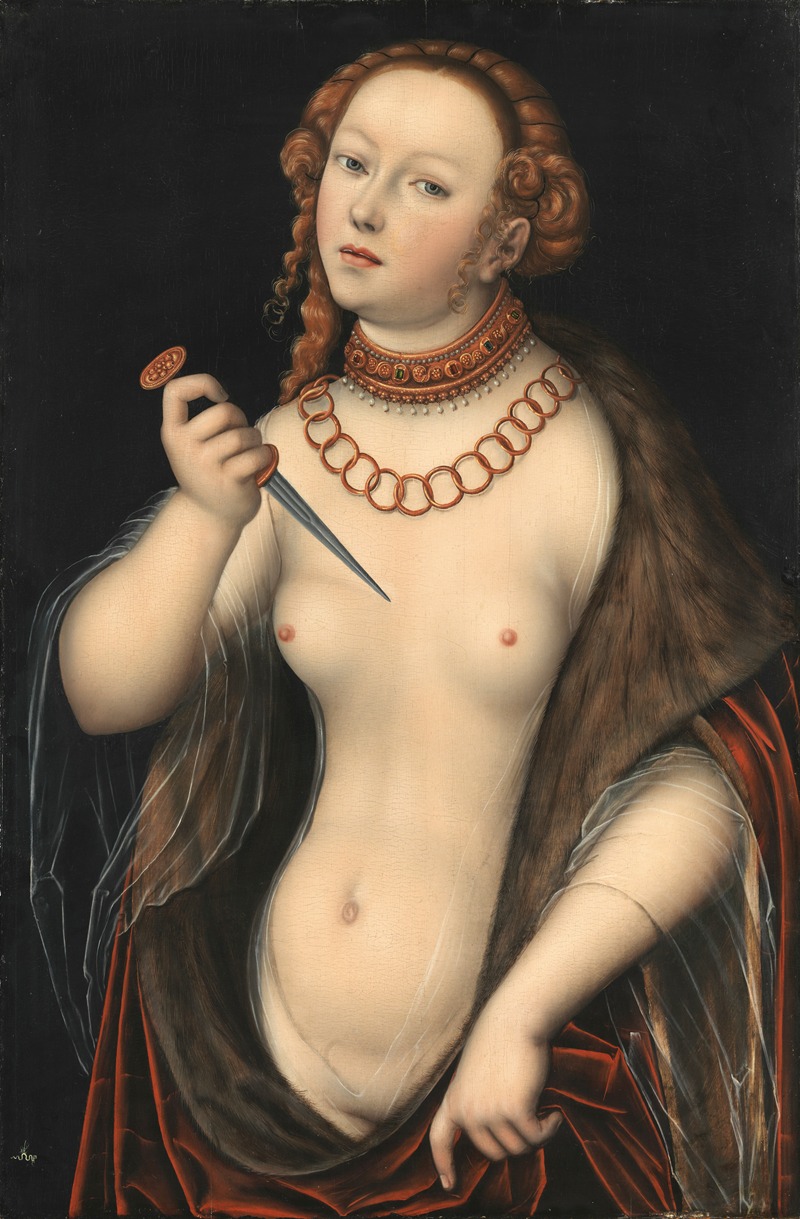
Lucretia
A hand-painted replica of Lucas Cranach the Elder’s masterpiece Lucretia, meticulously crafted by professional artists to capture the true essence of the original. Each piece is created with museum-quality canvas and rare mineral pigments, carefully painted by experienced artists with delicate brushstrokes and rich, layered colors to perfectly recreate the texture of the original artwork. Unlike machine-printed reproductions, this hand-painted version brings the painting to life, infused with the artist’s emotions and skill in every stroke. Whether for personal collection or home decoration, it instantly elevates the artistic atmosphere of any space.
Lucas Cranach the Elder, a prominent German Renaissance painter, created several works depicting the story of Lucretia, a legendary figure from ancient Rome. One of his notable paintings, "Lucretia," exemplifies his skill in portraying delicate human emotions and his mastery of the Renaissance style.
The painting "Lucretia" by Lucas Cranach the Elder is believed to have been completed around the early 16th century, a period when Cranach was at the height of his artistic career. Cranach was known for his ability to blend Gothic and Renaissance styles, and his works often featured religious and mythological themes. The story of Lucretia, a tale of virtue, honor, and tragedy, was a popular subject during the Renaissance, symbolizing the moral and ethical dilemmas faced by individuals.
Lucretia was a noblewoman in ancient Rome whose story was famously recounted by historians such as Livy. According to the legend, Lucretia was raped by Sextus Tarquinius, the son of the last king of Rome. In the aftermath of this violation, Lucretia took her own life, an act that spurred the Roman populace to revolt against the monarchy, leading to the establishment of the Roman Republic. Her story became emblematic of personal integrity and the fight against tyranny, themes that resonated deeply during the Renaissance.
In Cranach's depiction, Lucretia is often portrayed in a moment of contemplation or just before her tragic death. The painting captures her in a state of undress, holding a dagger, which is a common motif in artworks depicting this narrative. The choice to portray her partially nude is not merely for aesthetic purposes but serves to emphasize her vulnerability and the gravity of her situation. Cranach's Lucretia is a study in contrasts: her serene expression juxtaposed with the impending act of violence she is about to commit upon herself.
Cranach's use of color and detail is notable in this work. The soft, luminous quality of Lucretia's skin contrasts with the rich textures of the fabrics around her, highlighting Cranach's skill in rendering different materials. The background is often kept simple, focusing the viewer's attention on Lucretia herself and the emotional weight of the scene. This compositional choice underscores the personal and intimate nature of her story.
The painting also reflects Cranach's interest in humanist themes, a hallmark of Renaissance art. By choosing to depict Lucretia, Cranach engages with questions of virtue, honor, and the individual's role in society. These themes were central to the humanist discourse of the time, which sought to reconcile classical ideals with contemporary concerns.
Cranach's "Lucretia" is housed in various collections, as he painted multiple versions of this subject. Each version offers a slightly different interpretation, showcasing Cranach's evolving style and the enduring appeal of Lucretia's story. The painting remains a powerful testament to Cranach's ability to convey complex narratives through his art, and it continues to be studied and admired for its artistic and historical significance.
Overall, Lucas Cranach the Elder's "Lucretia" is a compelling work that captures the tragic dignity of its subject. Through his masterful use of composition, color, and emotion, Cranach provides a poignant exploration of a timeless story, reflecting the values and concerns of the Renaissance era.









